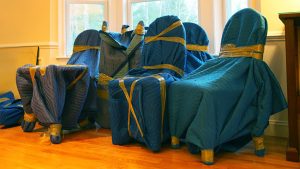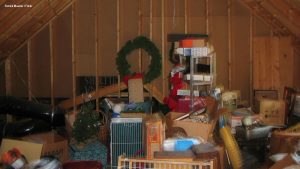
Accidents will happen, it is inevitable, and we are only human. Right?
Sort of. Nearly every accident is preventable, if only with hindsight. If only we had done something differently, if only this or that hadn’t happened.
But we live in the real world and accidents WILL happen. So how do we minimize the risk of damage or accidents when moving home? What can you do to reduce the likelihood of your furniture or household goods being damaged, or more importantly, prevent any injury to yourself or those around you? What precautions can we take to ensure our home move is safe?
In this guide we will:
- Identify what items are most likely to be damaged during a home move.
- Explore how to prevent breakage and damage when moving home.
- Look at how to prevent accidents and injuries when moving home.
- Guide you on how to prepare your packaging to maximize its protection.
- Give advice on how to prevent property from damage when moving home.
- Explain what your home moving insurance options are.
- Show you how to hire a reputable moving company.
- Advise you on what to do if your removal company damages your items.
What are the most commonly damaged items during a home move?
These are the top ten items that get damaged on moving day and what you can do to minimize the risks of damage to those items.
Glass and China – Obvious, but these are easily breakable things and if improperly packaged, or handled incorrectly, are highly likely to be damaged. Here you will find a step by step guide on how to package fragile and delicate items to prevent any damage.
Framed Items – These are vulnerable items that need special attention paid to the packaging when moving home. This guide will show you how to pack framed items to help prevent any damage during the moving process.
Furniture – Some basic protection will help prevent furniture damage when moving home, and will help prevent any damage to your old or new property. Due to the often heavy and awkward nature of furniture, it is more likely that walls will get gouged or scraped by furniture that is not handled correctly. There are some great tips on how to package and protect your furniture in this guide.
Lampshades – Because of their delicate construction, lampshades are particularly liable to be crushed during your home move. Lampshades can be one of the most fragile things to move. The best way to pack lampshades is in the fashion of a Russian doll, one inside another. Having prepared a large box as per the instructions in the next section, place the largest shade in the box first and then stack the remaining shades inside one another, largest to smallest.
Electronic Items – Ideally you should pack anything electrical in the original packaging they came in. Failing that, here is a detailed guide on how to pack your electronics.
Bottles – There are specific boxes for moving bottles and these should be utilized to ensure your bottles arrive at your new home intact. These boxes will be of the correct strength and will have dividers that will ensure the bottles will not move about within the case during transit. Of course, to save money you may be able to locate some free bottle boxes from your local supermarket.
Sporting Goods – It is recommended to transport these in the protective covers you normally use like racquet head covers or golf club bags, then wrap in additional protection to further prevent damage to the covers.
Musical Instruments – With the exception of items such as pianos which require specialist packing and handling, the majority of musical instruments have cases which are used to transport them. Additional padding should be wrapped around the case to prevent any damage to the case itself whilst in transit.
Plants – To ensure that your plants arrive intact, and with a chance of survival, follow our guide to moving plants to a new home.
You – The most valuable item to be moved will be you, and if you are embarking upon a self-move, you are at the biggest risk of damage. Here we will give top advice on how to avoid common moving injuries during your home move.





Share your thoughts by leaving a comment